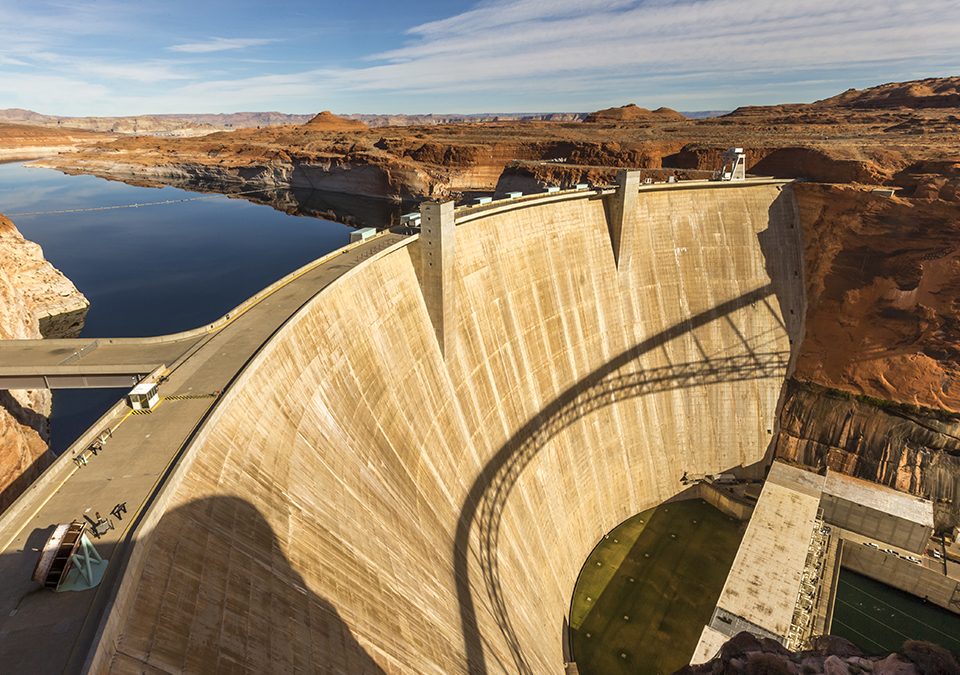U.S. Takes Steps to Reclaim International Nuclear Energy Mantle
Glen Canyon Dam: A Renewable Jewel in the Desert Southwest
July 1, 2020U.S. Acts to Secure Domestic Sources of Rare Earth Minerals
July 17, 2020Recently we wrote about the steps taken by the U.S. to regain global leadership in nuclear energy innovation. These actions laid out a strategy for restoring America’s competitive advantage while boosting national security. To that end, the U.S. International Development Finance Corporation (DFC) has recently proposed reversing a prohibition implemented by the Obama Administration, which had prevented the U.S. from funding civil nuclear projects overseas.
The move is the result of a bipartisan request from the Republican Chairman Lisa Murkowski (R-AK) and Democratic Ranking Member Joe Manchin (D-WV) of the Senate Energy and Natural Resources Committee. The proposed rule, or policy change, will now enter a 30-day comment period.
The Overseas Private Investment Corporation (OPIC) – the predecessor to the DFC — implemented the ban almost a decade ago.
On October 5, 2018, President Trump signed into law the Better Utilization of Investments Leading to Development (BUILD) Act. The BUILD Act transformed OPIC into the Development Finance Corporation (DFC). The DFC’s mission is to partner with the “…private sector to finance solutions to the most critical challenges facing the developing world today.”
While emerging economies have had access to clean, reliable power for electricity, their options have been cornered by Russia and China. The DFC’s proposed policy change would unshackle U.S. nuclear technology from competing with Russia and China in developing markets.
“Nuclear energy technology can help meet the world’s clean energy needs,” explains Senator Murkowski. “Our energy future is global, and steps like this DFC decision are crucial to meeting climate and energy leadership goals. Lifting this prohibition will simultaneously strengthen the U.S. economy while boosting international relations and global energy security.”
Unfortunately, until very recently, nuclear energy has been relegated to the “back burner” in the series of conversations about the future of clean energy. This unfortunate relegation is baffling, given that nuclear power is the world’s second-largest source of emission-free electricity after hydropower. Nuclear also operates at a high capacity factor, with an average capacity of 93.5%. In layman’s terms, this means a nuclear power plant can operate at full power for 354 days a year.
This unmatched reliability, coupled with low emissions, makes nuclear energy an indispensable tool in reducing carbon emissions.
Influential policymakers, like the Chairman of the U.S House’s Subcommittee on Environment and Climate Change, Rep. Paul Tonko (D-NY), recently echoed this sentiment by stating that “Clean energy of any kind, including our nuclear energy, is an important factor as we go forward.”
Ending the U.S. ban on financing civilian nuclear projects overseas will help make this critical form of clean energy available to more countries and drive U.S. innovation forward.
Emerging economies need access to affordable, reliable, and carbon-free power, just like the industrialized world. It’s encouraging that the Development Finance Corporation has taken these first steps to reestablish the U.S. leadership role in international nuclear development.
Online recommendations
- Non Gamstop Casinos
- Casino Online Nuovi
- Casino Non Aams
- Slot Sites UK
- Non Gamstop Casino
- UK Online Casinos Not On Gamstop
- UK Online Casinos Not On Gamstop
- Casino Sites Not On Gamstop
- Online Casinos
- Best Non Gamstop Casinos
- Non Gamstop Casino Sites UK
- Non Gamstop Casinos UK
- UK Betting Sites Not On Gamstop
- Casinos Not On Gamstop
- Non Gamstop Casinos
- Non Gamstop Casinos
- Best Non Gamstop Casinos
- UK Online Casinos Not On Gamstop
- Casino Sites Not On Gamstop
- Non Gamstop Casino
- Casino Not On Gamstop
- Casinos Not On Gamstop
- New Non Gamstop Casinos No Deposit Bonus
- Casino Non Aams
- Migliori Casino Online
- Crypto Casino
- Meilleurs Sites De Paris Sportifs Belgique
- Site De Poker En Ligne Francais
- Meilleur Site De Paris Sportif Hors Arjel
- 出金早いオンラインカジノ



